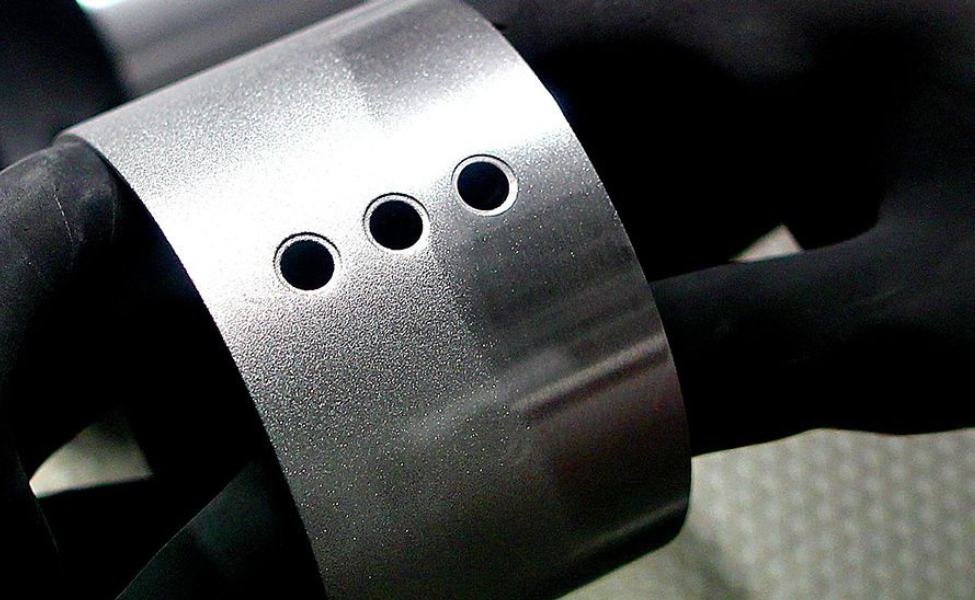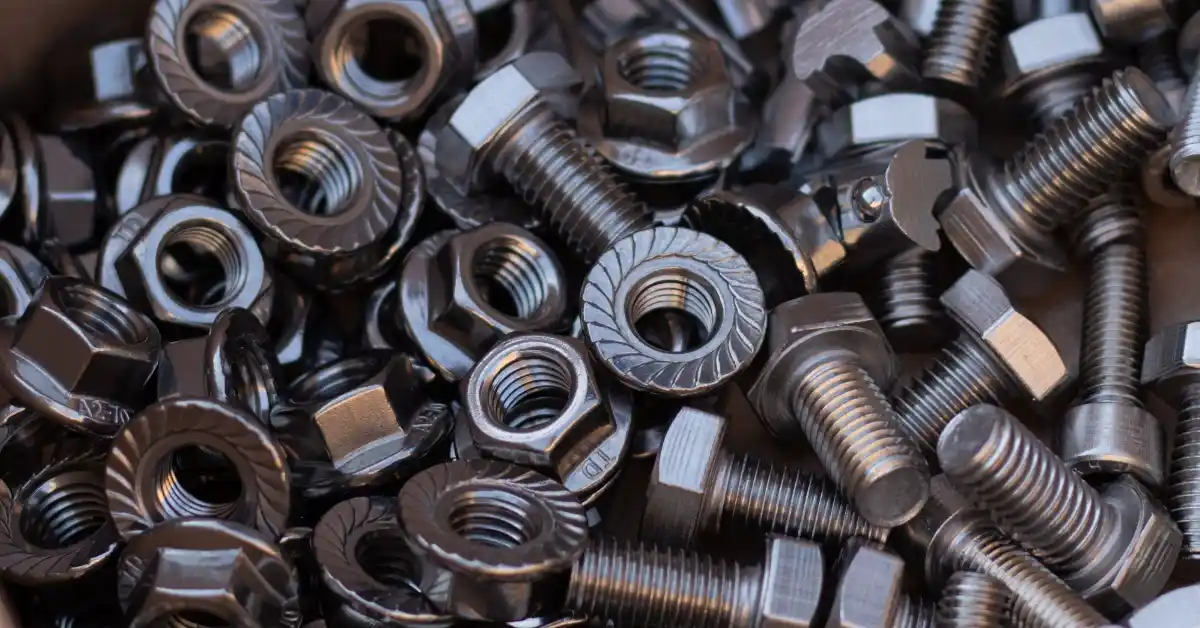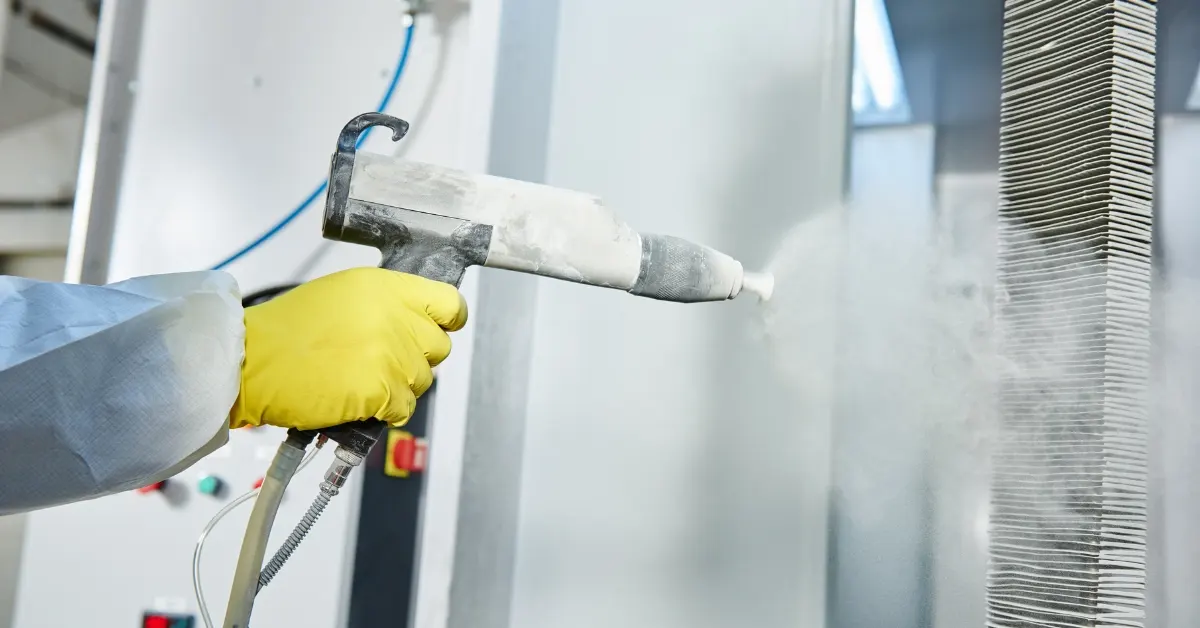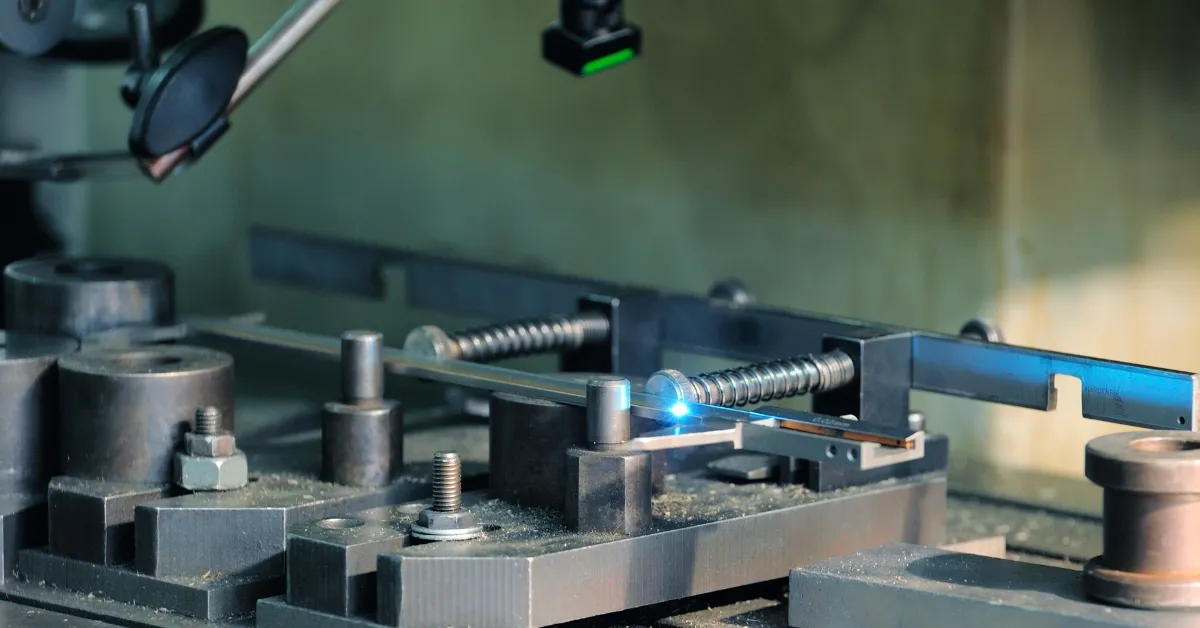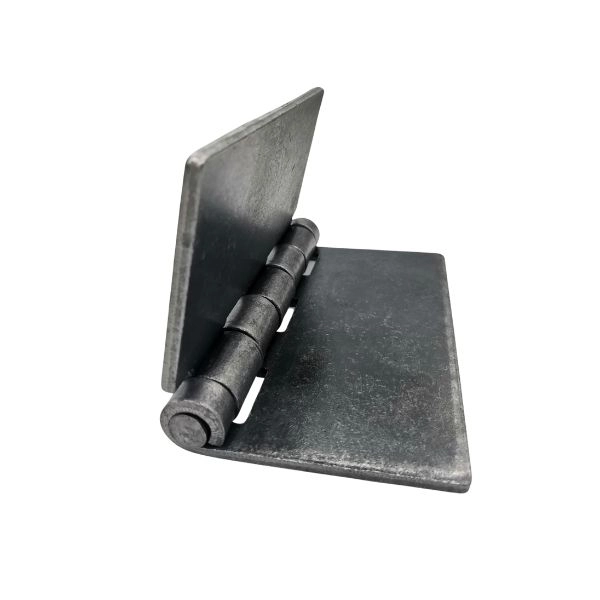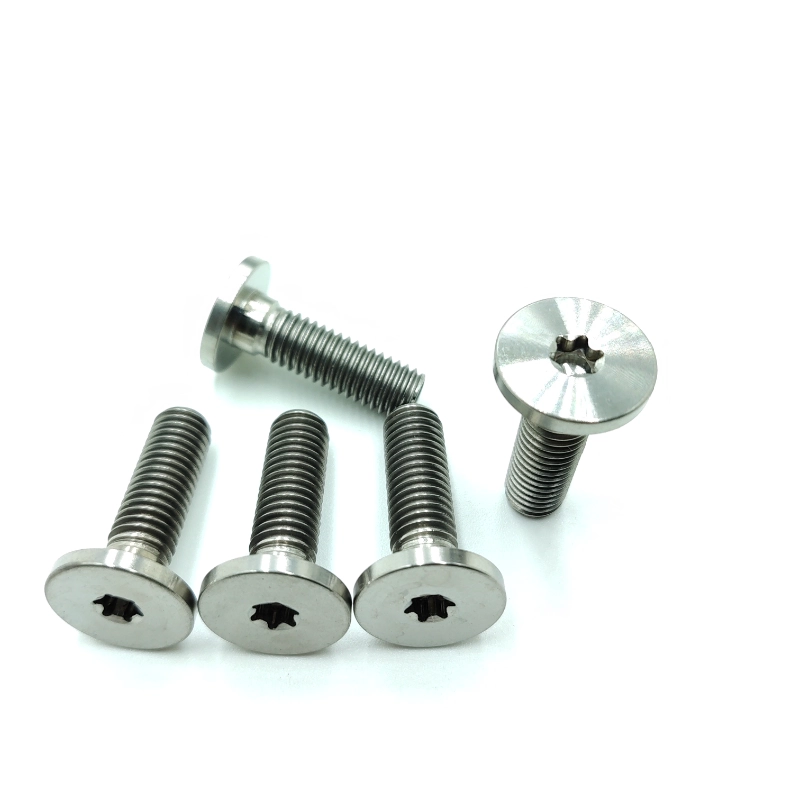Quenching is a form of heat treatment and one of our core processes at HDCMfg. It involves rapidly cooling a hot metal to lock its atoms in place. Quenching transforms austenite into hard martensite, creating a material with exceptional strength.
Whether you are a longtime metallurgist or newbie, read on to learn all about the quenching process.
What Is Quenching?

Quenching is a conventional heat treatment process that improves hardness and strength. Commonly quenched metals include cast iron, cast steel, and ferrous metals.
To perform quenching,
- First, heat your steel to the critical temperature.
- Next, hold it at this temperature for some time to austenitize it.
- After that, you may rapidly cool the steel in oil, air, or brine, ideally below Ms.
Effects of Quenching on Metal Properties
The main reason for quenching is to enhance hardness and strength. When you heat your material to the critical temperature, partial or complete austenizing takes place.
However, due to rapid cooling, austenite is prevented from transforming into ferrite or pearlite. Instead, it is changed into martensite, resulting in a metal that is very hard and very brittle.
Advantages:
Quenching offers many benefits to metalworkers. These include:

- Hardness: Due to martensite formation, quenching makes your metal very hard. Hardness is a non-negotiable factor for components and tools that withstand abrasion, such as bearings and tool sets.
- Wear resistance: Quenching enhances the tensile and yield strength of your steel. The rapid cooling locks atoms in a distorted lattice structure. This means dislocations will have a hard time moving around.
- Elastic Limit: In manufacturing, quenching is applied to springs to increase their elastic limit.
Drawbacks:
The drawbacks to quench hardening are
- Residual stress: Residual stress can be introduced in your metal during quenching. Due to an uneven cooling rate, the surface will cool and contract faster than the interior. Thereby, causing tensile and compressive stresses.
If you don’t manage this risk, your application becomes susceptible to distortion or cracking. Consult your supplier about the best post-quenching techniques for mitigating this issue.
- Ductility: Although quench hardening enhances strength and hardness, it causes metal to lose ductility. Since the metal is in a brittle condition, it becomes more prone to stress cracking.
That’s the reason we follow up quenching with tempering. Tempering reduces brittleness without causing strength loss.
Choosing a Quench Medium
There are several methods and techniques of quenching. Each significantly affects the final properties of your finished material. Let us cover common media for quenching metal and their trade-offs.
Water
Water is an aggressive quenching method since it offers the fastest cooling rate. Water’s rapid cooling mechanism is suitable when hardness and strength are non-negotiable. However, if proper procedures are not followed, it makes your metal susceptible to cracking and distortion.
Oil
Oil quenching is slower and more controlled than water quenching. Therefore, it is considered a safe method to prevent metal cracking and distortion
Oil quenching is ideal for striking a balance between hardness and strength. Due to the unique cooling process, it also gives your metal an excellent surface finish.
Air
Air is the most cost-effective medium of quenching. It involves heating your steel, then leaving it to cool slowly in the air. Since it is the slowest quenching medium, air minimizes the risk of cracks or thermal stress. This makes air ideal for steels that require exceptional toughness and moderate hardness.
Another form of air quenching uses compressed air. This method gives you more control of the temperature and cooling rate.
Brine
10% salt is added to water to form brine. This form of quenching is less common than water, air, or oil. But it offers a superior rate of cooling even faster than water.
It’s worth mentioning that brine is corrosive. Therefore, you must remove it from your steel by rinsing thoroughly once the job is complete.
Polymer-based quenchant
Polymers are not a medium of quenching but rather a quenching additive. Its cooling rate is slightly faster than oil but slower and less corrosive than water.
Polymers are inversely soluble in water. This means they separate from water at the start of a quench. Due to this effect, a polymer solution is created around your metal, enabling heat to exchange in a more controlled manner.
Common Materials That Are Quenched
Below are the common materials that are quenched:
Steel
The most common metal that is quenched is steel. Due to its high carbon content, quenching transforms austenite to martensite, improving hardness and strength.
Aluminum, Titanium, and Copper alloys
Certain titanium alloys can undergo quenching. It is useful for projects where the weight ratio is a factor. These include defense, aerospace, and automotive applications. The same goes for certain aluminum alloys. You can subject these alloys to quenching if you want to enhance their performance.
Before moving forward, you must understand that quenching has an opposite effect on most non-ferrous alloys. Instead of hardening, these metals soften during quenching. Some examples are grades of copper, aluminum, and austenitic stainless steels such as 304.
Post-Quench Treatment
Apart from enhancing hardness, quenching makes your steel more brittle. Unless you temper it, some steels become too brittle to work with.
This is where post-quenching treatments come in. Techniques such as tempering, martempering, and austempering further refine your metal, producing a balance of ductility and strength.
Tempering:
Once quenching has been performed, you can temper your metal to control excess hardness. Tempering involves heating the metal and holding it at a temperature below the critical point. The metal can then be cooled to room temperature.
Advanced quench techniques:
With advanced quench techniques, you quench the steel higher than Ms (martensite start temperature). After that, you will hold it to form pure bainite or relieve internal stresses. Let’s explore these techniques:
Martempering: Martempering, also known as stepped quenching, reduces stresses obtained during quenching. You can perform martempering by heating steel above the critical range, then quenching it between 150 °C and 300 °C.
Next, hold it above Ms (Martensite start point) until a uniform temperature is achieved across the steel. After that, you can cool the metal to room temperature, then perform regular tempering.
Austempering: Austempering is a post-quenching technique that reduces metal distortion. It is essentially the same as regular quenching and tempering. The primary difference is that you will hold your metal at the quenching temperature for a longer period of time.
Applications of Quenching
The quenching process increases hardness and strength. Because of these properties, quenched steel is widely used in industries where durability and high strength are factors. These include:
- Toolmaking: Think about everyday knives, shear blades, and drill bits. These tools withstand cyclic stresses, so they need to be strong and ductile.
- Military: Defense manufacturers use quenched steel to create firearm parts, armour plates, and aircraft components.
- Hand tools: Quenched steel is useful for creating durable agricultural tools, wrenches, screwdrivers, and other tools.
Safety, Cost, and Practical Considerations

Quenching is a simple process on the surface. You heat your material to a critical temperature, then quickly cool it to make it harder.
However, the mechanical processes involved are highly-specific. Therefore, it is best to have certified metallurgists determine appropriate temperatures and cooling method for your application.
Having said that, there are key safety and cost considerations to acknowledge.
- Equipment: A quench tank is a dedicated pool for cooling your metal. Regardless of size, they must be capable of maintaining cooling temperatures within a tight range. If not, you might fail to achieve your desired mechanical properties.
- Quench flow. Flow refers to the rate at which liquid quenchants move over your metal. Without it, the quenchant will simply boil into steam. To prevent boiling, keep your quenchant flowing and provide enough space between metal parts, encouraging smooth flow.
- Safety hazards: Oil quenchants can ignite if overheated or exposed to sparks. Therefore, extinguishers and fire suppression systems are mandatory in professional setups.
- Speed. If too much time is wasted between the oven and tank, your metal might return to pearlite, meaning your heating is wasted.
- Costs: Water is the cheapest quenching medium. Be aware that it presents the highest risk of distortion and cracking. Oil, in contrast, offers greater control over your material’s properties. But it is more expensive, and the risk of fire outbreaks exists.
Lastly, polymer quenchants offer the most flexibility in cooling rates. But they are expensive and need ongoing maintenance.
- Corrosion and spills: Water- or brine-based quenchants may cause rust on nearby equipment. Furthermore, spilled oils can damage floors and increase slip hazards.
Conclusion
In conclusion, quenching is an exceptional way to enhance the performance of your metal. By transforming austenite to martensite, quenching produces a very hard and very brittle metal.
Finally, it is best to consult heat treatment experts to ensure the best settings for your project. Since different metals react differently to quench hardening, there is no room for error. Failure to adhere to specific alloy guidelines could result in expensive mistakes.
Discover more with our blog posts.
Recent Posts
Discover more about our products
HDC Products
Instant Quote!
